Fun facts
Explore captivating fun facts about nature's quirks, uncovering surprising ecological wonders and rare animal behaviors that intrigue and educate. Discover now!
245 articles

New
New
Foxes occupy a unique space in our world. They're wild enough to maintain their mystery, yet adaptable enough to live among us. They star in our oldest folktales as clever tricksters and wise messengers, earning a cultural reputation that's surprisingly consistent across continents and civilizations....

New
New
Owls have become ingrained in our stories, popping up as symbols of wisdom, spooky omens, or even messengers from other realms. They appear in our myths as symbols of wisdom, omens of death, or messengers from other realms. In Harry Potter, they deliver mail. In Native American traditions, they carry...

New
New
Ever wonder why a beach vacation feels different from a trip to the mountains? Or why coastal cities have different weather than those further inland? From perfect mild days along shorelines to dry desert heat, from sticky tropical coastal summers to thin mountain air, our planet's diverse climates create...

New
New
Are snakes and serpents the same thing? While they’re often used interchangeably, there are key differences in meaning, usage, and symbolism. In everyday language, both words may refer to the same animal, but “serpent” often carries deeper mythological or religious significance.
In this article by thedailyECO,...

New
New
Volcanoes are essentially openings in the Earth's crust where molten rock, called magma, rises from deep inside the planet and erupts onto the surface as lava. These powerful forces dramatically alter landscapes, build new land, and sometimes present serious dangers to nearby communities. To better understand...
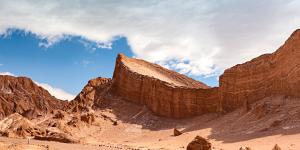
The Atacama Desert in Chile is one of the driest places on Earth, with some areas receiving almost no rainfall for centuries. But why doesn’t it rain in the Atacama? The answer lies in a mix of geographical, climatic, and atmospheric factors. From powerful wind patterns to ocean currents that block moisture,...
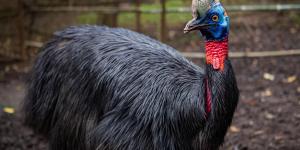
The southern cassowary (Casuarius casuarius) is considered the most dangerous bird in the world due to both its physical characteristics and its temperament. It is a large bird with long sharp claws at the end of very powerful legs. Other birds may also have similar characteristics, but the cassowary...
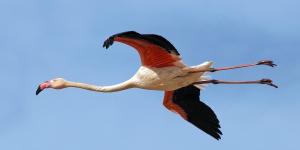
Yes, flamingos do fly. We may most associated them with standing in one place and doing so on one leg, but these birds have the ability of flight. Not only can flamingos fly, they are excellent fliers. As migratory birds, flamingos need to fly very long distances in search of food and a suitable place to reproduce....

The universe is filled with billions of celestial objects, but not all of them are the same. Some shine brightly, like the stars, while others orbit planets as moons. But what exactly is the difference between a planet, a star, and a natural satellite? Understanding these differences helps us make sense...

Capybaras (Hydrochoerus hydrochaeris) are the world's largest rodents and inhabit the wetlands of South America. They live in gregarious groups, are herbivores, and are adapted to a semi-aquatic lifestyle. They are also just about one of the cutest animals on the planet. Popular across social media, they...

Rogue planets are celestial objects that move through space without being gravitationally bound to a star. Unlike planets orbiting the sun, these bodies travel independently through the galaxy. This means they can provide a wealth of information about the evolution and dynamics of planets in the Universe....
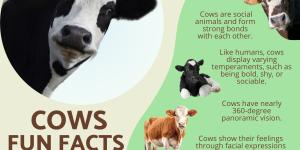
When we look at cows grazing peacefully in fields, most of us see simple farm animals. But beneath their calm exterior lies a world of surprising intelligence, complex social lives, and sensory abilities that science is only beginning to fully understand. Far from being the docile, unaware creatures they're...
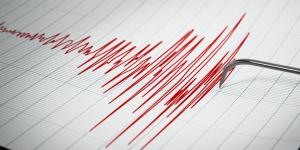
The Big One is a term used to describe a potentially catastrophic earthquake expected to strike along major fault lines, such as the San Andreas Fault. Experts warn that when it happens, it could cause widespread destruction, aftershocks, and even tsunamis. But when might The Big One hit, and how dangerous...
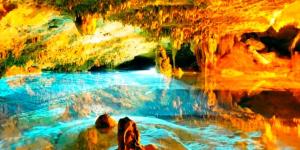
Beneath the Earth's surface lies a hidden network of subterranean rivers, quietly flowing through limestone caverns and porous rock formations. These mysterious waterways play a crucial role in the planet's hydrological cycle, influencing groundwater movement and cave formation. But what exactly are subterranean...

Early Earth was nothing like it is now. It was a fiery, molten ball, constantly hit by asteroids and comets, with volcanoes erupting everywhere. Over millions of years, it cooled down. Heavy metals sank to the center, creating Earth's core, while lighter materials formed the outer layers. Today, Earth is...
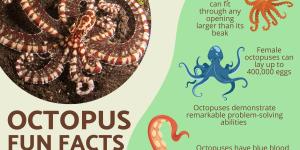
Octopuses are some of the most mysterious and intelligent creatures in the ocean. These eight-armed inhabitants of the deep are far more than just unusual-looking sea dwellers. With three hearts pumping blue blood through their bodies, a brain that extends into their limbs, and the ability to transform...

When exploring the fascinating world of geology, the terms minerals, rocks, and crystals are often confused, even though they represent distinct and essential components of Earth's structure. These natural materials play a crucial role in shaping the planet’s surface and contribute to its overall composition....

The Fata Morgana phenomenon is a type of mirage that occurs due to the refraction of light in layers of air with different temperatures. This refraction causes the distortion of objects on the horizon. It is an optical illusion which has been observed in various parts of the world. Its distortion effects...
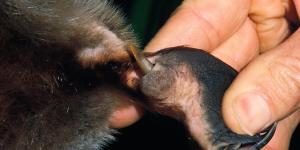
The platypus is one of nature’s most fascinating creatures, but did you know that this unique animal is also venomous? While most people associate venom with snakes and spiders, the male platypus carries a surprising defense mechanism—sharp spurs on its hind legs that can inject venom. But how dangerous is...
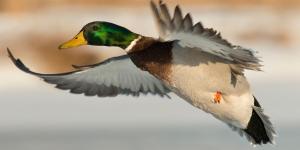
Most duck species can fly, although there are notable exceptions in both wild duck species and domestic duck breeds. Even among those able to fly, their ability can vary according to their needs. Not all flying ducks are migratory, so they may have less need to fly high or over long distances. Those that...

There are around 1,565,855 species of animals in the world, distributed among animal types such as mammals, birds, reptiles, amphibians, arachnids, corals, crustaceans and others. It is impossible to produce an exact number of the total animal species. This is due to both the limitations of studying animal...

Why do we have seasons? It's a question that touches everything from our weather to the way nature behaves. Despite the common belief, it's not about Earth's distance from the Sun. The real reason is our planet's 23.5-degree axial tilt. This tilt stays consistent as Earth orbits the Sun, meaning different...
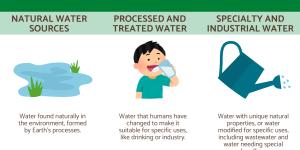
Water exists in many forms, each with unique characteristics shaped by natural processes or human intervention. While water covers much of the globe, its availability and usability vary significantly depending on its source, composition, and treatment. Understanding these variations is crucial for both...

It's easy to forget that plants are constantly exchanging gases with the air, a process far more complex than our own breathing. From the tiny pores on a leaf to the massive gas exchange of ocean algae, plant respiration is vital for all life on Earth. Plants don't have lungs like us. Instead, they've...

We all know feathers are essential for a bird's ability to fly, but their importance goes far beyond just taking to the skies. These structures, which are lightweight yet highly intricate, carry out a remarkable array of essential tasks that aid in the survival and welfare of birds through various and enchanting...
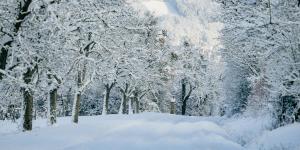
Why are snowflakes white while ice cubes are clear? It's all about how their structures interact with light. Snowflakes' complex, airy crystals have countless surfaces that scatter light in all directions (diffuse reflection), making them appear white. Ice, with its tightly packed structure, allows light...

Apart from animals, plants are the only organisms which have vascular tissues. This only applies to vascular plants, since non-vascular plants have a more simple structure. In biology, tissues are a collection of cells which work together to perform a particular function, but which are less complicated...
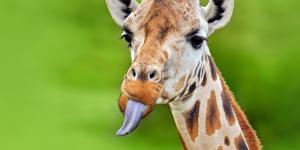
Known for their long necks, giraffes (Giraffa camelopardalis) also possess an equally amazing adaptation: their tongues. At 53 cm (20.8 inches) long and distinctively two-toned, these specialized organs are crucial for survival in the African savanna. Millions of years of evolutionary refinement are reflected...

Known scientifically as meteors, shooting stars are an astronomical phenomenon that occurs when small particles of dust and rock from interplanetary space enter the Earth's atmosphere. These particles burn up due to friction with the air as they fall at high speed, creating a bright trail of light in the sky...

Have you ever stopped to wonder why the Earth is round? It's a fundamental fact we learn early in life, but the science behind this seemingly simple observation is quite fascinating. Our planet isn't a perfect sphere, but it's close, and the forces that shaped it into this form are powerful and universal....
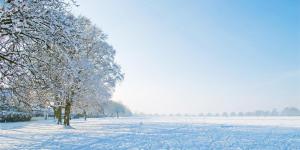
World Snow Day is celebrated on the third Sunday of January every year. In 2025, it will be celebrated on 19th January. This day was created with the aim of bringing people closer to winter sports and other recreational activities enjoyed in a snowy terrain. It is also designed to raise awareness of...

Saturn, recognized for its prominent ring system, has held human interest for centuries. Early astronomers observed it with rudimentary telescopes, while modern missions like Cassini have provided detailed data, deepening our understanding of this gas giant. Today, Saturn remains a cornerstone of planetary...

The Iberian lynx (Lynx pardinus) is one of four extant lynx species from the genus Lynx. Native to the Iberian Peninsula of Spain and Portugal, the Iberian lynx is one of the few apex predators left in the region. While numbers have been decimated over the years for various reasons, there in an encouraging...

When you think of sharks, the image of a fearsome predator with rows of razor-sharp teeth might spring to mind. But these apex predators have dominated the oceans for over 400 million years, long before dinosaurs roamed the Earth. And the truth is, sharks are far more than Hollywood villains. In fact,...
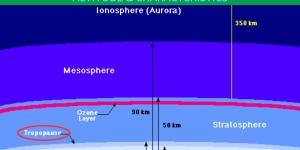
We have already explained the different levels of Earth's atmosphere at thedailyECO, but the expanse which divides our planet from the rest of our solar system is vast. This means that smaller sub-layers are often required to better understand some of the liminal areas of the atmosphere. Each layer...

Bonobos (Pan paniscus) and chimpanzees (Pan troglodytes) are part of the same genus, Pan, and share 98.7% of their DNA. They also share over 98% of their DNA with humans. Although they split from a common ancestor about 1.7 million years ago, they have developed clear differences in their appearance,...

Knowing exactly how many rings the planet Saturn has is practically impossible. We know that Saturn has 7 main rings, but these are actually groups of smaller rings which make up each larger main ring. There are about 30 individual rings within these ring groups, but these are also made of thousands...

Dark matter and dark energy make up 95% of our universe, yet they remain among science's biggest mysteries. Though they share the word "dark" in their names, these cosmic forces work in completely opposite ways and play very different roles in shaping our universe. Let's explore what makes each one unique...

A seismograph is an instrument used to detect, measure and record ground movements caused by seismic phenomena. Such seismic phenomena include earthquakes, volcanic eruptions and even those induced by human activity such as those caused by explosions. Incorporating elements such as a seismometer and seismogram,...

Humans once believed the Sun orbited Earth. While this seems logical, we feel still while the Sun appears to move across the sky, the truth is exactly opposite. Earth moves around the Sun, a fact that completely changed our understanding of our place in space. Today, we know the Earth never sits still....

Gravity is the force of attraction exerted by bodies with mass. The planet Earth on which we live has considerable mass and the gravity it generates is responsible for keeping objects on its surface. As one of the fundamental interactions, it also influences a wide variety of natural and dynamic phenomena. Earth's...
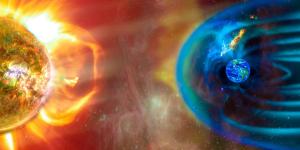
Solar wind shapes our space environment in many different ways. This continuous stream of charged particles flowing from the Sun's outer atmosphere travels millions of miles through space before encountering Earth's magnetic shield. While much of this cosmic wind goes unnoticed in our daily lives, its effects...

The Mercalli Intensity Scale measures earthquake effects through observable damage and human experience, using 12 levels from barely noticeable tremors to total destruction. Created in 1902 and modified in 1931, this scale helps emergency responders assess damage patterns and engineers design seismic-resistant...

The thermosphere is one of the upper layers of the Earth's atmosphere, located between the mesosphere and the exosphere. It begins approximately 50 mi (80 km) above sea level and extends to around 435 mi (700 km). It has some key functions which allow human life on Earth to continue, such as protection against...

Earthquakes are geological hazards which occur due to the movement of tectonic plates in the Earth's crust. Their study requires specific tools and scales to measure their magnitude, intensity and effects. The Richter scale is a method that measures the energy released at the epicenter of an earthquake...

Permafrost refers to ground that remains frozen for at least two consecutive years. Found primarily in polar regions and high-altitude areas, it plays a critical role in shaping ecosystems and influencing global climate. Permafrost consists of soil, rock, and organic material locked in ice. As temperatures...

The exosphere is the outermost layer of the a planet's atmosphere. On our planet, it is begins 500 310 miles from the surface of the Earth and extends gradually until it blends with outer space. Characterized by its low density and particle dispersion, this region acts as a transition zone between the...
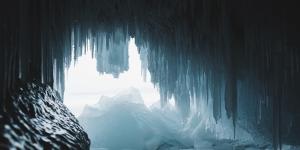
The cryosphere refers to all areas on Earth where water exists in its frozen form, including glaciers, ice sheets, snow, sea ice, and permafrost. This frozen world plays a critical role in shaping the global climate, as it influences Earth’s temperature, sea levels, and water cycles. However, climate change...

For most of us, the concept of fruit vs. vegetable is mainly a culinary distinction. Generally speaking, we go to vegetables when we want something savory and fruit when we want something sweet. However, this distinction is not accurate when it comes to categorizing fruits and vegetables. To really know the...

Stars are distant objects that shine brightly in the night sky. Their light has traveled many light-years to reach us.Stars generate light through nuclear fusion in their cores. Inside these giant balls of gas, temperatures reach 15 million degrees Celsius, forcing hydrogen atoms to combine into helium. This...
